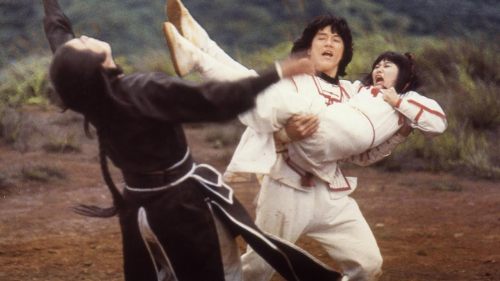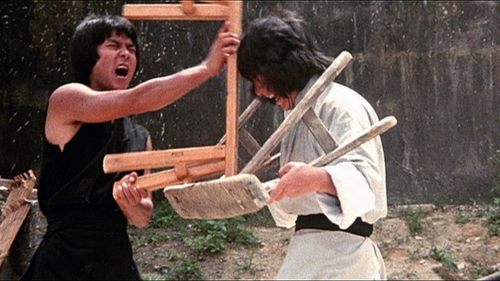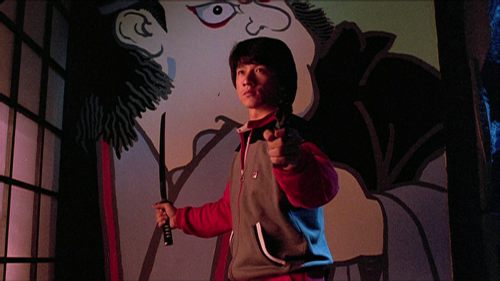GODZILLA: THE SHOWA-ERA FILMS, 1954-1975 Criterion Blu-ray Review: The GCU Assembled
Watching the 15 films collected in Criterion’s Godzilla: The Showa-Era Films, 1954-1975 Blu-ray set really hammers home the notion that the Toho Pictures team were pioneers of the shared-universe franchise-building that paid off so handsomely decades later for Marvel. If you consider that both began with movies that addressed themes of war and weaponry in fantastical terms, you can see Ghidorah, the Three-Headed Monster (1964) as analogous to the first Avengers, uniting the “heroes” of a few previous individual adventures to put aside their differences and battle a common enemy. Further down the line came Destroy All Monsters (1968), a precursor to Avengers: Endgame in which these characters, and a bunch more introduced in other features after the first mashup, came together for a saga-ending blowout. Destroy was intended to be Godzilla’s swan song, but you can’t keep a good (and profitable) monster down, and he appeared in six more features before his “Showa era” (named for “Showa Emperor” Hirohito) ended.
The Big G’s evolution through these movies further prefigured that of another classic screen monster: Freddy Krueger, who first came on as a terrifying manifestation of the darkest regions of the subconscious before transforming into a scarred standup comedian. Godzilla, in his first film, was a towering embodiment of post-WWII atomic anxiety and a frightening figure claiming countless casualties as he savaged Japan. As the movies went on, he become both friendlier and kid-friendlier, defending the Earth against a series of monstrous attackers, easily the most memorable of which was the three-headed Ghidorah (a.k.a. King Ghidorah). The juvenalia reached its nadir with 1973’s Godzilla vs. Megalon (or as I think of it, Puppy Godzilla and 10-Cent Ultraman vs. the Stock Footage), though the Showa series rebounded with the more grown-up and accomplished Terror of Mechagodzilla (1975), which marked the return of Ishiro Honda (who helmed the original and seven prior sequels) to the director’s chair.
Post-Destroy All Monsters, Honda and one-time Godzilla guider Yoshimitsu Banno took some chances with the form, and one of the nice things about Criterion’s set is that it allows for reassessment of these much-maligned entries. Honda’s All Monsters Attack (1969), a.k.a. Godzilla’s Revenge, anticipates the meta trends of the late 20th and 21st centuries, exploring the relationship between young fans and their kaiju heroes (see my analysis of the movie here). Tackling the early 1970s’ growing ecological concerns, Banno’s Godzilla vs. Hedorah (1971) is also easily the most horrific, hallucinatory and experimental of all these films. Watching this pair as they’re presented here, in the original Japanese with English subtitles, can only help advance their rep among fans (though unfortunately, the latter’s U.S. credit sequence, with the Godzilla vs. the Smog Monster title and “Save the Earth” song, isn’t present).
The first of the eight discs in Criterion’s package is a replication of their previous Blu-ray (with fresh menu screens) combining the ’54 Godzilla with its re-edited 1956 U.S. edition Godzilla, King of the Monsters! and a surfeit of excellent extras, including passionate and detailed commentaries by David Kalat and a number of fascinating featurettes about the movie’s production and inspirations. That’s pretty much it as far as film-specific extras, though; in other words, hold onto those Classic Media DVDs from the late 2000s. The one, exciting exception is the Japanese edition of Honda’s King Kong vs. Godzilla (1963), available here for the first time in this country, and which for some reason isn’t presented alongside the U.S. version on Disc 2 but hidden away among the other supplements on Disc 8.
Presented with non-removable English subtitles (and Japanese ones on the right side of the image when the occasional American speaks), this original cut is six minutes longer than the U.S. bowdlerization, which dispensed with a great deal of Honda’s footage in favor of stilted stuff featuring Michael Keith and Harry Holcombe as well as stock footage from Honda’s The Mysterians (1957). Lost there and found here is a great deal more material poking fun at the Japanese television industry, as personified by the buffoonish, ratings-obsessed Mr. Tako (Ichiro Arishima)—and a line playing off the fact that tako means “octopus” in Japanese. The pacing and editing are quite different between the two versions, with Godzilla first appearing 26 minutes into the Japanese version but after only 13 in the U.S. variant, and the voices of the American characters are distinct as well (with a helicopter pilot calling the monster “Gojira” in the Japanese edition).
The other highlight on the bonus disc is an hour-long program billed as a presentation of unused special effects sequences from Toho productions, but actually a documentary about the creation of these setpieces from both the studio’s kaiju pictures and their war epics. It’s a celebration of the dedication and meticulousness of effects master Eiji Tsuburaya, and a must-watch for fans of Japanese genre fare, incorporating interviews with Honda, producer Tomoyuki Tanaka and others and vintage on-set footage of Tsuburaya at work. There is indeed a good amount of deleted material on view, from an unused Godzilla-vs.-Manda battle in Destroy All Monsters to alternate destruction footage from Ghidorah, and even bloopers of model vehicles breaking down mid-shot and other mistakes.
Another one-hour feature here is an interview with Honda conducted by Banno for the Directors Guild of Japan’s My Life in Film series in 1990. Sadly, the two don’t compare notes on Hedorah, but they do cover a lot of ground, addressing Honda’s early career, the origins of Godzilla (including memories of a trip through Hiroshima), the themes of his kaiju output, and his thoughts on cinematic storytelling. Rounding out the extras package are a 1999 chat with composer Ifukube, who details the craft of both the music and sound effects for Godzilla movies (revealing just how the beast’s roar was created), and new, brief interviews with Toho contract player Bin Furuya, sharing fun anecdotes about his many small parts before taking the title role in Ultraman; Tsugotoshi Komada on playing Megalon’s Jet Jaguar; and Alex Cox, enthusiastically discussing the aesthetics of Godzilla cinema.
Although the movies have not been given fresh restorations, with occasional fluctuations in the visual quality (particularly in certain optical effects shots), the hi-def transfers are overall quite pleasing, and effectively convey the black-and-white moodiness of the first film and Godzilla Raids Again (1955) and the colorful spectacle of the subsequent features. It’s a shame that more of the American versions couldn’t be included for comparative purposes (though international English-language audio tracks are included on six of the sequels), but then, the real purpose here is to showcase the films as they were originally intended to be enjoyed and appreciated. Criterion has given them a deluxe physical presentation too, packaging the discs in a 14 x 11-inch hardcover book containing a survey of the series and notes on the individual movies by Godzilla experts Steve Ryfle and Ed Godziszewski respectively, and original illustrations by a wide spectrum of artists that are as varied and vibrant as the films themselves.



